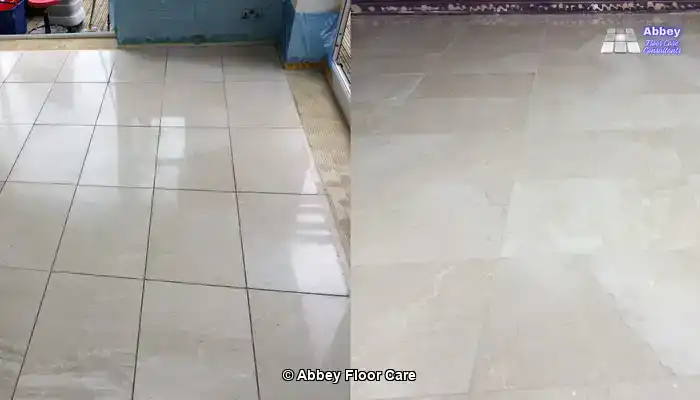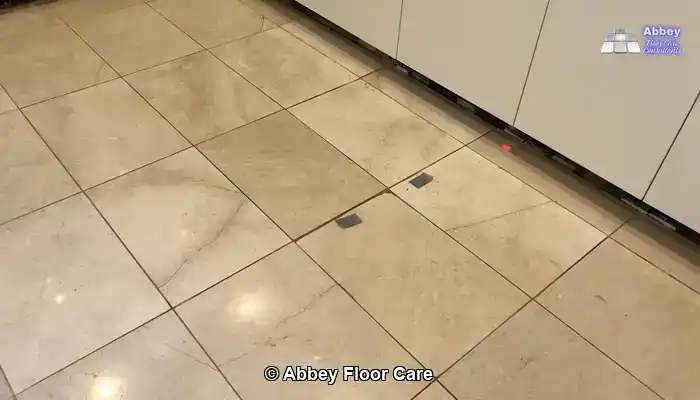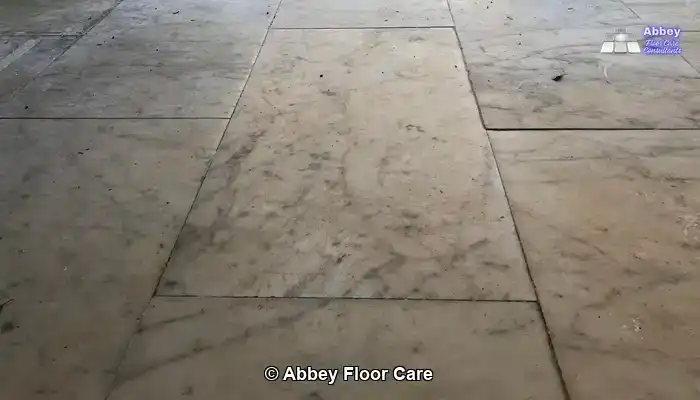Your cart is currently empty!
Restored Marble: Achieving a Fresh, Like-New Look


Last Updated on November 6, 2025 by David
Discover How Marble Can Be Restored to Its Former Splendor

Essential Marble Restoration Insights for Homeowners in the UK
Marble is highly valued for its elegance and stunning beauty, yet it can gradually lose its clarity, colour, and shine over time due to wear and tear. As scratches, dull patches, etch marks, and stains accumulate, homeowners often find themselves questioning whether their beloved marble can ever regain its original luster. This comprehensive guide explores realistic restoration outcomes, the limitations of the process, and effective methods for maintaining the results long after restoration. Whether you’re dealing with acid damage, deep wear, or simply a tired surface, understanding the restoration process can empower you to make informed decisions about your treasured stone surfaces.
Understanding the Concept of “Like New” for Your Marble Surfaces

Achieving the Desired Shine, Clarity, and Depth of Colour in Marble Restoration
When homeowners express the desire for their marble to look “like new,” they often refer to the original shine and clarity of the stone — specifically how light reflects off its surface, highlighting the inherent natural colour depth of the material. A successful restoration can replicate this aesthetic by removing surface damage and refining the finish to perfection. The resulting floor appears vibrant, smooth, and pristine, often making it indistinguishable from a freshly installed slab. Achieving this level of restoration requires a meticulous process of honing and polishing, ensuring that every inch of the surface reflects its full potential and beauty.
Recognizing the Difference Between Surface Wear and Structural Damage in Marble
It’s essential to differentiate between cosmetic wear and deeper structural issues when assessing marble. Surface scratches, dullness, and light etching can typically be rectified through honing and polishing, restoring the marble’s aesthetic quality effectively. However, more serious problems such as cracks, chips, and internal discolouration may not be fully eliminated through these methods, potentially impacting the stone’s integrity. While restoration enhances visible and tactile aspects, it does not reconstruct the stone itself. Recognizing this distinction helps set realistic expectations for restoration outcomes and ensures that homeowners are satisfied with the final results. By understanding these variables, homeowners can better appreciate the transformative potential of professional restoration services.
Exploring the Capabilities and Limitations of Professional Marble Restoration Services

How Restoration Processes Effectively Address Deep Scratches, Chips, and Acid Etching
Restoration processes are designed to effectively eliminate most surface-level damage, including scratches and mild etching caused by acidic substances like lemon juice or vinegar. These damaging marks dull the finish and disrupt the stone’s clarity, but honing and polishing can typically restore a smooth, reflective surface. Nevertheless, deeper scratches and chips may require grinding or filling, which necessitates professional intervention. While the overall appearance can be significantly improved, some flaws may remain visible depending on their depth and location. Homeowners should prepare themselves for the reality that, although restoration can transform the look of their marble, certain imperfections might still persist.
Identifying UV Damage and Internal Discolouration in Marble Surfaces
Marble exposed to intense sunlight over extended periods may fade or develop a yellowish tint, impacting its overall aesthetic.
Here’s a detailed explanation of why this phenomenon occurs:
UV Ray Damage (Fading): Sunlight, particularly its ultraviolet (UV) rays, can cause the natural pigments in the stone to fade over time. This photochemical reaction leads to colour fading, creating a less vibrant appearance that often makes the stone look “washed out.” This effect is particularly noticeable in specific colours of marble, where the richness of the hue is compromised.
-
- Yellowing: Yellowing in white marble is frequently attributed to prolonged exposure to UV light, significantly altering its appearance and appeal.
- Iron Oxidation: Many types of white marble contain naturally occurring trace amounts of iron. When exposed to moisture and oxidizers (such as air or water), the iron can rust, a process that may be accelerated by sunlight and heat, resulting in yellow or brown discolouration.
- Surface Degradation: UV rays can also degrade sealants or resins applied to the marble, leading to yellowing and dulling of the surface appearance, which detracts from its overall aesthetic enjoyment.
Although marble is acclaimed for its durability, it is more susceptible to UV-induced alterations compared to harder stones like granite or quartzite. This concern is particularly relevant for marble used in outdoor settings or indoor spaces that receive prolonged, intense, direct sunlight, such as a sunny windowsill or areas near large, unshaded windows. To protect your marble, it is advisable to utilize:
- UV-resistant sealants that provide an additional layer of protection against fading.
- Shades, blinds, or curtains for indoor pieces to mitigate excessive sun exposure, preserving their beauty.
- Proper placement to limit direct sun exposure and maintain the natural elegance of the stone.
While restoration can enhance the surface appearance, it cannot reverse colour changes originating from below the surface, reinforcing the importance of preventive care and strategic maintenance.
Visual Comparison: Before and After Images of Marble with Iron Oxide Stains


In such instances, the focus shifts from achieving a “like new” appearance to creating a cleaner, more uniform finish that minimizes visual distractions. This understanding is vital for managing expectations during the restoration process, ensuring homeowners grasp the nuances involved.
Diving Deep into the Concepts of Honing, Polishing, and Comprehensive Restoration Techniques
When is Polishing Enough for Marble Restoration Projects?
Polishing serves as a surface-level treatment that revitalizes shine by smoothing out fine scratches and enhancing reflectivity. It is particularly suited for dull marble that remains otherwise intact. If the stone has lost its gloss due to wear or mild etching, polishing may suffice to restore a “like new” appearance. However, it will not eliminate deeper flaws or rectify uneven surfaces, which may require further intervention. Therefore, homeowners should carefully assess their marble’s condition to determine if polishing alone is adequate for their specific needs and desired outcomes.
When to Opt for Honing or Grinding for Thorough Restoration
Honing penetrates deeper than polishing, removing a thin layer of the marble surface to eliminate scratches, etch marks, and surface damage. For more severe wear, grinding may be required to level the stone and completely reset the finish. These methods are more intensive but yield dramatic results. When homeowners desire a truly fresh surface that appears and feels brand new, honing or grinding is often the necessary step. Understanding the differences between these techniques can help homeowners make informed decisions about the best approach for their unique restoration needs.
Evaluating the Effectiveness of DIY Kits vs. Professional Services for Marble Restoration
What to Expect from DIY Kits in Marble Restoration?
DIY marble restoration kits typically include polishing powders, sealers, and basic tools designed for at-home use. These products can enhance surface shine and diminish the appearance of light etching, providing a convenient solution for minimal maintenance. For small areas or minor dullness, DIY kits offer a cost-effective method to rejuvenate the stone. However, they seldom achieve a genuine “like new” finish when compared to professional services. Without access to advanced abrasives and machinery, deeper imperfections remain unaddressed, often resulting in uneven outcomes. Homeowners should set realistic expectations when opting for DIY restoration solutions, understanding that professional services often yield superior, lasting results.
The Importance of Professional Tools in Achieving High-Quality Marble Restoration Results
Professional restoration employs diamond abrasives, rotary machines, and graded polishing compounds that work in stages to achieve optimal results. This sophisticated equipment enables technicians to level the surface, effectively remove deep damage, and precisely refine the finish. DIY kits lack the necessary power and control to deliver consistent results across larger areas. For homeowners seeking a flawless, long-lasting outcome, the difference made by professional tools and expertise is substantial. Investing in professional services can be a worthwhile decision for those looking to restore their marble to its optimal condition and beauty.
Understanding the Longevity of a Restored Marble Finish Post-Restoration
Importance of Sealing, Cleaning, and Recognizing Wear Patterns for Marble Longevity
Once the restoration process is complete, sealing the marble becomes essential for preserving the finish by blocking moisture and minimizing stain absorption. A high-quality sealer can typically last between 1 to 3 years, depending on usage and foot traffic. Regular cleaning with pH-neutral products and avoiding abrasive pads or acidic spills will extend the life of the restored surface significantly. In high-traffic areas, the finish may gradually lose its shine, yet with proper care, clarity and brilliance can be maintained for years. Homeowners are encouraged to adopt a reasonable maintenance routine to prolong the life and beauty of their restored marble surfaces.
Can the Marble Restoration Process Be Repeated Over Time Without Problems?
Indeed, marble restoration is an ongoing process that can be repeated as necessary. If the surface becomes dull or scratched again, it can be rehoned and repolished to restore its beauty. However, it is important to note that each restoration cycle removes a small amount of stone, making it prudent to avoid excessive wear between treatments. Homeowners who follow a routine of maintenance — including resealing and gentle cleaning — will find that restoration remains a valuable investment over the years, ensuring that their marble continues to look its best and maintain its allure.
Will Restored Marble Naturally Develop Patina Over Time?
Understanding the Difference Between Natural Patina and Artificial Gloss in Restored Marble
Even after a thorough restoration, marble continues to age naturally. Over time, subtle wear patterns, micro-abrasions, and environmental exposure contribute to a soft patina — a gentle sheen that reflects the stone’s unique history. This natural patina is distinct from the artificial gloss produced through polishing and sealing. Initially, a restored surface may appear brand new, but it will gradually develop character and charm over time. For many homeowners, this evolving finish adds authenticity and depth, particularly in older properties where marble plays an integral role in the home’s narrative and aesthetic.
Addressing Common Questions from Surrey Homeowners About Marble Restoration Services
What Are the Average Restoration Costs for Marble in Surrey?
Costs can vary significantly based on the area size, the condition of the marble, and the extent of restoration required. Light polishing is generally more affordable than comprehensive grinding and honing. In Surrey, homeowners typically invest in restoration when their marble is situated in a high-visibility area or as part of a long-term property upgrade. While prices can differ widely, the true value lies in preserving the stone and enhancing the home’s overall aesthetic appeal. Homeowners should weigh the long-term benefits of investing in quality restoration services against their budget considerations.
Are All Varieties of Marble Suitable for Restoration Techniques?
Most types of marble can be restored, but the results will highly depend on the composition and condition of the stone. Softer marbles may show wear more quickly and respond better to polishing, making them easier to restore. Conversely, harder types may require more aggressive honing techniques for effective restoration. Some exotic stones with pronounced veining or colour variations may not achieve a uniform finish. A professional assessment is crucial to determine the feasibility of restoration for your specific flooring, ensuring that homeowners make informed choices about their restoration options.
Will the Restored Finish Match the Original Marble Installation?
While the goal of restoration is to replicate the original finish, achieving an exact match can depend on the method used during the initial installation and treatment of the marble. If the stone was factory-polished, the restored surface may exhibit slight differences in gloss levels or texture. Nevertheless, most homeowners find the outcome visually consistent and significantly more appealing than the worn surface they began with. The objective is to improve the appearance, not to achieve perfection — and in most cases, the transformation is quite remarkable. Understanding these nuances can help manage expectations and ensure satisfaction with the final results of the restoration.
The Article Will Restored Marble Ever Look As Good As New first found on https://www.abbeyfloorcare.co.uk
The Article Restored Marble: Can It Ever Look Brand New Again? appeared first on https://fabritec.org
The Article Restored Marble: Achieving a Like-New Appearance Was Found On https://limitsofstrategy.com
Leave a Reply